The Greeks were the first Europeans who were civilized by the Black Afrikans from the Nile Valley. The Greeks later passed on their acquired knowledge to the Romans who lost it, which resulted in the Dark Ages. However, civilization was again brought back to Europe when another group of Afrikans, the Israelite Moors, brought the "Dark Ages" to an end.
In trying to hide the truth, European historians promote the myth that it was the Europeans who brought civilization to Afrika when in fact it was the Afrikans who civilized Europe. What has been hidden is the fact that Greek civilization was a descendant or a child of the more advanced Black Afrikan civilizations which had preceded it by thousands of years. In fact, Greek legend speaks of Egyptian and Phoenician conquerors who had been ruling Greece until the 14th to 15th century B.C.
[1] The Moors were the rulers of Europe. [2] Before there were any Europeans in Europe there were the Black Moors.
[3] A Royal Moor playing a game of chess, the people who ruled Europe for centuries. [4] Noble Moorish Freemason
At the beginning of the 7th century Muhammad ibn Abdallah was preaching the word of Islam. The Arabs were obsessed with religious devotion and sought to conquer the world and spread the gospel of Islam. By 708 they had overrun North Afrika, and consequently the Moors accepted Arabic as the national language and converted to Islam.
THE ARRIVAL OF THE MOORS
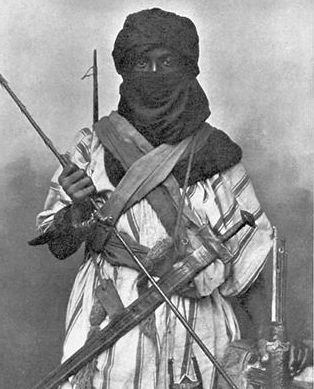
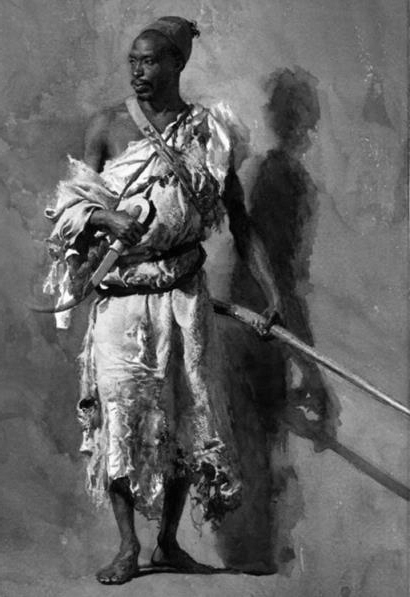 After the collapse of the Roman Empire around 470 A.D., Afrikans began to gradually repopulate southern Europe, and by 711 A.D., a Black Moorish army from Morocco entered Spain under the command of an Afrikan native named General Tariq bin Abdullah bin Wanamu al-Zanati, or Tarik ibn Ziyad al-Gibral with 7,000 troops, consisting of 300 Arabs and 6,700 native Sudanese (an Arabic word for Black people).
After the collapse of the Roman Empire around 470 A.D., Afrikans began to gradually repopulate southern Europe, and by 711 A.D., a Black Moorish army from Morocco entered Spain under the command of an Afrikan native named General Tariq bin Abdullah bin Wanamu al-Zanati, or Tarik ibn Ziyad al-Gibral with 7,000 troops, consisting of 300 Arabs and 6,700 native Sudanese (an Arabic word for Black people).
Tarik crossed over from Afrika to the Iberian Peninsula landing between the mountains known as Mons Calpe and defeated the Visigoths who were a Germanic tribe that ruled Spain at the time. The area was renamed Gebel Tarik (Tariq)
(the Hill of Tarik) by the Afrikans to honour their great General’s accomplishments. In Arabic this is Jabal al Tarik (Tariks mountain), but the Europeans in their usual disdain for other people's languages, corrupted it to The Rock of Gibraltar.
General Tarik and his Afrikan army surprised and captured many Spanish towns, among them Heraclea. The Moors then established al-Andalus, an Islamic empire that covered Spain, Portugal, Andorra and southern France.
Tarik, being a devout Muslim and consumed by the desire to spread the religion of Muhammad to the European continent, gave the order that all boats be burnt when his fleet arrived in Spain, because he had decided that if he could not glorify Allah by seizing Spain for Islam, then he and his army would never return home but perish in battle.
In August of 711, Roderick, the Gothic King of Spain, after hearing about the invading Afrikan army, set out to gather a large force to oppose Tarik, but Tarik won that decisive victory over the opposing European army, defeating King Roderick after rousing his troops on the eve of the battle with the following words: "My brethren, the enemy is before you, the sea is behind; whither would ye fly? Follow your general; I am resolved either to lose my life or to trample on the prostrate king of the Romans".
Within a short time, the Muslim forces had conquered the entire Iberian Peninsula and Tarik became Master of Spain.
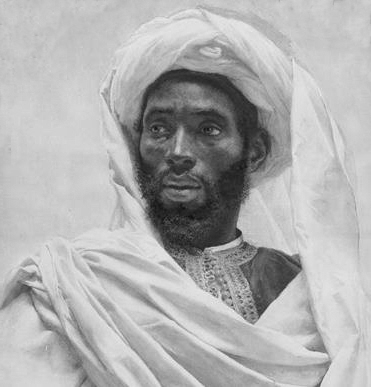 Because the conquering army in Spain was made up largely of Afrikans from Morocco, various phrases like “the Moorish invasion of Spain” were coined which may explain why the term Blackamoor still exists in the English language, a word that leaves no doubt as to the colour and ethnicity of the occupational forces in Spain.
Because the conquering army in Spain was made up largely of Afrikans from Morocco, various phrases like “the Moorish invasion of Spain” were coined which may explain why the term Blackamoor still exists in the English language, a word that leaves no doubt as to the colour and ethnicity of the occupational forces in Spain.
 The colour of the conquering armies that arrived with Tarik was clearly described by a European scholar who was sympathetic towards Christian Spain.
The colour of the conquering armies that arrived with Tarik was clearly described by a European scholar who was sympathetic towards Christian Spain.
"...the reins of their (Moors) horses were as fire, their faces black as pitch, their eyes shone like burning candles, their horses were swift as leopards and the riders fiercer than a wolf in the sheepfold at night...The noble Goths were broken in an hour, quicker than tongue can tell. Oh, luckless Spain!”
According to legend, the phrase, "Thank heaven for 711" came from the indescribable feeling of freedom enjoyed after Moorish civilization spread throughout Spain, Portugal, Andorra and Southern France, replacing the severe bondage imposed by the Visigoths. For over 750 years, the Moors led Spain in an unparalleled cycle of freedom of religion, association, education and enterprise.
It is commonly believed that the movement of Afrikans into Europe in great numbers and into positions of real power did not take place until the Moorish invasion of Spain in 711 A.D., but Al-Makkary's "History of the Mohammedan Dynasties in Spain" stated that a great drought had affected Spain about three thousand years earlier, a calamity followed closely by an Afrikan invasion that established an ancient Afrikan Dynasty in Spain, a fact that is usually left out of the official history books.
RACIAL MIXING UNDER THE MOORS
After the invasion of 711, other waves of Moors even Blacker in colour arrived. The occupation of Portugal during this era accounted for the fact that even noble families had absorbed the blood of the Black Moor. Racial mixing in Portugal, Spain and elsewhere throughout Europe under the influence of the Moors took place on a massive scale. The Moors were therefore responsible for darkening the whites in these areas, Portugal in particular, which became the first model of a Negroid Republic in Europe.
This is what caused historians to claim that “Portugal is in reality a Negroid land,” and Napoleon Bonaparte to declare that “Afrika begins at the Pyrenees”.
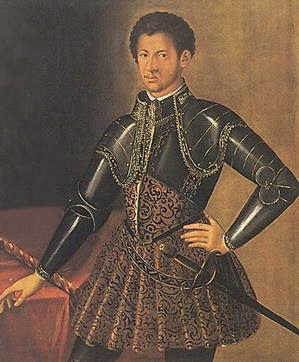 Interracial marriages also took place on a wide scale between the Moors and the Italians, who at that time had large admixtures of German blood due to the invasion of the Goths and Vandals. Besides Portugal and Spain, the blood of the Afrikans had also spread throughout all layers of Italian society, seeping its way into the leading and most illustrious royal family of the times; The Medicis. Skin colour was not a barrier to power and honour in Italy as was demonstrated when Alessandro de Medici, often called “il Moro,” (the Moor) (right), became the first Duke of Florence, Italy.
Interracial marriages also took place on a wide scale between the Moors and the Italians, who at that time had large admixtures of German blood due to the invasion of the Goths and Vandals. Besides Portugal and Spain, the blood of the Afrikans had also spread throughout all layers of Italian society, seeping its way into the leading and most illustrious royal family of the times; The Medicis. Skin colour was not a barrier to power and honour in Italy as was demonstrated when Alessandro de Medici, often called “il Moro,” (the Moor) (right), became the first Duke of Florence, Italy.
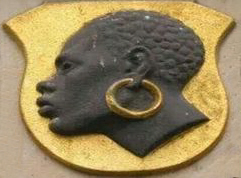 Although most Moorish families of nobility intermarried with Europeans, their surnames survived as a link to their Afrikan ancestry.
Although most Moorish families of nobility intermarried with Europeans, their surnames survived as a link to their Afrikan ancestry.
Family names like Moore, Morris, Morrison, Morse, Black, Morandi, Morese, Negri, Schwarz (the German word for Black), all bear linguistic references to their Afrikan heritage.
For example, the oldest Schwarz family crests (left) depict the image of an Afrikan, or Schwarzkopf, (meaning Black head in German).
Other European families and cities embraced similar coats of arms which still exist today, showing the influential part Afrikans played in European history. These European families often call themselves “Black Nobility” yet claim no blackness but attribute the crests to the period when they conquered the Black Moors or slaves and state it is some sort of "honour by their ancestors." Clearly Europeans still persist in spreading falsehoods and propaganda as opposed to accepting the glaring facts.
[1] Coat of arms Germany [2] Coat of arms Italy [3] Coat of arms Europe [4] The Brotherhood of the Black heads, Northeast Europe
"These Family Crests describe old Britain’s Black Nobles who were the most elite, upper-class, rich and influential families." The common class citizens did not have the Coats of Arms or family crests as family insignias.
The Afrikan element was more predominant in Portugal than it was in Spain, and the noble families in Portugal and Spain who had absorbed the blood of the Moors were countless.
Widespread miscegenation (interracial marriages) began to alter the landscape, producing people of all shades, from jet black to near white. Eventually the volume of intermarriages between Blacks and whites led to the disappearance of the Black skin colour in Europe.
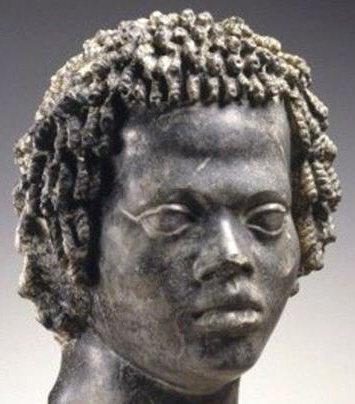 For 700 years (711-1492 A.D) the Black Moors had dominated and ruled Spain, southern France, and much of Scotland (southwest Europe), giving Europe its finest civilization ever, considering that Europe had again sunk to a level of almost complete barbarism after losing all of the civilizing principles that were bestowed upon them by the ancient Black Greeks (left) and Romans. Initially, Spain was the only country in Western Europe that had any semblance of civilization, but gradually it began to spread to Italy, Portugal and Northern Europe.
For 700 years (711-1492 A.D) the Black Moors had dominated and ruled Spain, southern France, and much of Scotland (southwest Europe), giving Europe its finest civilization ever, considering that Europe had again sunk to a level of almost complete barbarism after losing all of the civilizing principles that were bestowed upon them by the ancient Black Greeks (left) and Romans. Initially, Spain was the only country in Western Europe that had any semblance of civilization, but gradually it began to spread to Italy, Portugal and Northern Europe.
Some historians considered the invasion of Spain to be a total disaster. “The White people in these Iberian countries were not viewed in a favourable light. The Moors held a particularly low view of these Whites. They had often beaten them on the battlefield and with inferior numbers. The Europeans in other countries of this continent were also looked upon with disdain for their low intelligence and backwards way of life.”
THE CONQUERING MOORS WERE BLACK IN COLOUR
Many alternatives have been used by the Europeans during ancient times for the term Moor which described the indigenous Afrikans, and contrary to popular belief, this term was not interchangeable with Islamic or any specific Arab or Afrikan ethnicity, religion, or civilization. The English word Moor came from the Greek word mauro which literally means Black, blackened or charred, a term used by the Greeks to describe the Black skin colour of the Afrikans.
The evolution of the word from the Greek mauro to the Latin word maurus is obvious. The English transliteration is maurus with mauri being the plural form. This term was specifically used by the Romans when referring to the Black Afrikans, and writers in both Greek and Latin used the term literally as a racial identifier.
Other derived terms like the German mohr, the Spanish and Italian moro, the French maure, the Portuguese mouro, the Romanian maur and the Dutch moor, were also commonly used during the middle ages with reference to Black Afrikans, a term which can still be found in one of the oldest Dutch texts from the 1300s A.D.
Further evidence of the correct interpretation of the Latin term maurus can be found in the early English - Latin dictionaries.
For example, In Samuel Johnson’s “A Dictionary of the English Language (1768)”, "Moor" means "Negro" or "Black-a-moor."
In John Etick's “A new English-Latin dictionary (1783)”, the term "Maurus" means "Moor," "Negro," and "Aethiops."
In William Young’s “A new Latin-English dictionary (1810)”, "Maurus" means a "Black Moor."
According to the “Ainsworth's Latin Dictionary” by Alexander Jamieson, Robert Ainsworth (1828), the term "Maurus" means "Black Moor.”
In John Wilkes’ “The Encyclopaedia Londinensis (1817)”, "Moor" is listed as: "[maurus, Lat. Gr., Black.], a Negro; a Blackamoor."
In John Olgilvie's “The Imperial Dictionary of the English Language (1882)”, a "Moor" was defined as a "Black man" or "Negro."
In English dictionaries and Encyclopaediae before the 20th century, the English term "Moor" meant "Black."
The word "Mora" in Spanish originally meant "Moorish woman", but now it can also mean "Blackberry".
The word "Mora" in Italian also means "Negro" or Moorish female" in addition to "Blackberry", and "Moraiola" means "Black olive".
The word "Moreno" in Spanish means "Dark-complexioned" which now also means "Brunette".
The word "Moricaud" in French, means "Blackamoor" or "Dark-skinned", and "Morillon" means "Black grape".
In Arabic writings however, the term "Moor" practically did not exist, but the term "Berber" was used to describe the inhabitants of Islamic North Afrika to the west of Egypt.
However, by the 20th century, "Maurus" and "Moor" were all of a sudden defined as Berber and Arab, which was a major departure from its ancient antecedent.
The English word "Moor" did not come from the term Almoravid which is the English interpretation of the Arabic name Al-Murabitan that translates as "those who are ready to defend." In fact, the Latin and Greek versions of the word "Moor" were used for many centuries before the existence of the Almoravid dynasty, which, according to Arab historians were not even native to Afrika.
Barbari or Barbarians was the name given to the indigenous people of North Afrika by the Romans, not because of any cultural inferiority, but because certain social customs were different to those of the Romans. From that term evolved the name Berber, so in medieval and modern times, the Afrikans were also called Berbers.
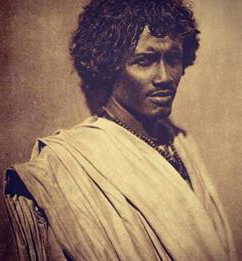 According to earlier versions of the Oxford English Dictionary, the Moors were commonly identified as very swarthy and Black as early as the Middle-Ages and as late as the 17th Century, which is why the word Moor was often synonymous with Negro. (On the left) is a Moor from Aswan, Egypt.
According to earlier versions of the Oxford English Dictionary, the Moors were commonly identified as very swarthy and Black as early as the Middle-Ages and as late as the 17th Century, which is why the word Moor was often synonymous with Negro. (On the left) is a Moor from Aswan, Egypt.
The original Moors, like the original Egyptians, were Black Afrikans, but as intermarrying became more widespread, only the Berbers, Arabs and coloureds in the Moroccan territories were called Moors, while the darkest and Black skinned Afrikans were called Black-a-Moors. Eventually, the term Black was dropped from Blackamoor. In North Afrika and especially the Muslim Arabs, mixed breeds and Berbers are currently classified as Moors.
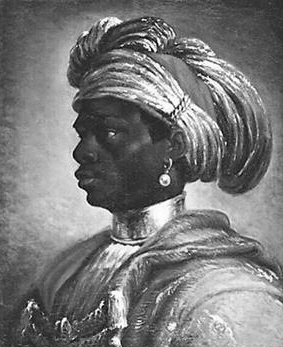 Around 46 B.C. when the Roman army entered West Afrika and encountered Black Afrikans they called them "Maures" based on the Greek adjective "Mauros" meaning "scorched or Black". Furthermore, during the European Renaissance, explorers, writers and scholars applied the term Moor to Blacks in general, using both words synonymously.
Around 46 B.C. when the Roman army entered West Afrika and encountered Black Afrikans they called them "Maures" based on the Greek adjective "Mauros" meaning "scorched or Black". Furthermore, during the European Renaissance, explorers, writers and scholars applied the term Moor to Blacks in general, using both words synonymously.
To the Greeks, the Moors were "a Black people" (Mauros), and to the Romans they were "a Black woolly-haired people" (Maurus), also known synonymously as Ethiops, Niger (Negro), and Afer (Afrikan). Moreover, as late as the 5th Century A. D., Procopius, a Roman historian, called the people of Morocco, Black.
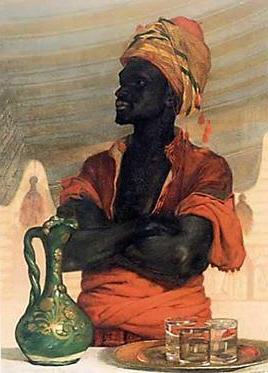 In addition to the numerous sources which support the view that the Moors were a Black-skinned people, there was no doubt in the minds of the Christians of early Europe as to their ethnicity. In the Chanson of Roland (Song of Roland) written after the Moors had invaded France in 718 A.D., the invaders were described as "Blacker than ink with large noses and ears, with nothing white except the teeth".
In addition to the numerous sources which support the view that the Moors were a Black-skinned people, there was no doubt in the minds of the Christians of early Europe as to their ethnicity. In the Chanson of Roland (Song of Roland) written after the Moors had invaded France in 718 A.D., the invaders were described as "Blacker than ink with large noses and ears, with nothing white except the teeth".
The Chanson of Roland states that the 50,000 strong Moorish army was led by Marganice, the Emperor of Ethiopia and Carthage. Their most valiant figure was Abisme (Abyssinian) who was described as "Black as melted pitch".
 Even more so, the Moors are shown as jet-Black in the official coat of arms of Aragon where four Moorish kings were killed in battle by King Pedro VIII on November 18, 1096. These pitch Black Negro troops also played an important part in the Moorish conquest of Spain, especially under Abderrahman I (757-787), who founded the independent kingdom of Cordova.
Even more so, the Moors are shown as jet-Black in the official coat of arms of Aragon where four Moorish kings were killed in battle by King Pedro VIII on November 18, 1096. These pitch Black Negro troops also played an important part in the Moorish conquest of Spain, especially under Abderrahman I (757-787), who founded the independent kingdom of Cordova.
A rival Moorish leader also arrived with a great number of Negroes from Afrika forming a mighty regiment in 1016 and took over the Caliphate, and in 1086, Yusuf ben Tachfln, who was described by Moorish historian Ali ibn Abd Allah as dark and woolly-haired, brought in an army composed mainly of pure Negroes.
In 1194 Yakub el-Mansur invaded Iberia and became its master. The guards of these Moorish kings were specially chosen because of their size. They were Negroes, "Jet-Black and of immense strength, recruited from the Atlas, Timbuktu, and Nigeria".
In most modern white text books, the North Afrikan Moors are described as a "white" Mediterranean tribe who were sunburnt and bronzed for generations. This was an attempt to completely remove the Afrikans from among the Islamic invaders and downgrade them to the role of minor slaves.
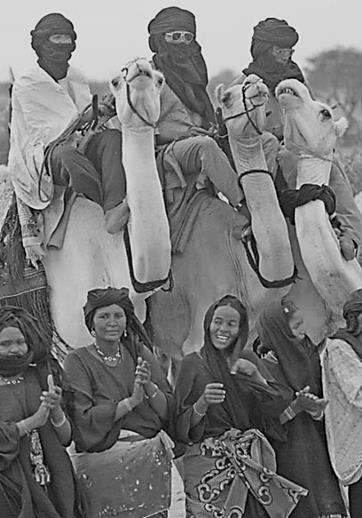
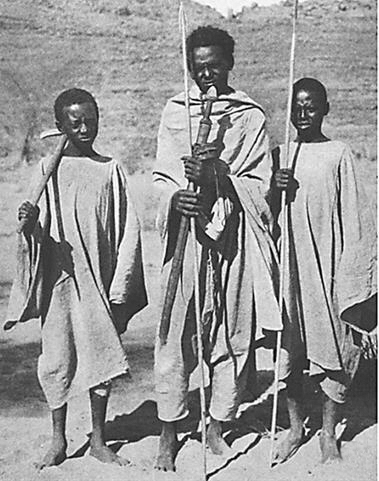 These original Berbers (right) were the North Afrikan ancestors of the present day brown people of the Sahara and the Sahel such as the Fulani, Tugareg and Zenagha of Southern Morocco, including the other brown Arabs.
These original Berbers (right) were the North Afrikan ancestors of the present day brown people of the Sahara and the Sahel such as the Fulani, Tugareg and Zenagha of Southern Morocco, including the other brown Arabs.
In other words, modern North Afrika has changed considerably as a result of the waves of invasions by the Greeks, Romans, Persians, Turks, Germanic tribes, Modern Arabs, and French, who impacted heavily on the colour variations of the region.
Europeans focus only on the present world of the white Arab and Berber people, trying to portray them as the way North Afrikans always looked, but this is false and misleading. This would be like saying that ancient America has always looked like the present day white population.
(On the left) are Moorish Tuareg people at a gathering in the country of Niger. (On the right) are Moorish girls playing the Kora which is a famous West Afrikan musical instrument that was played in ancient Egypt as well.
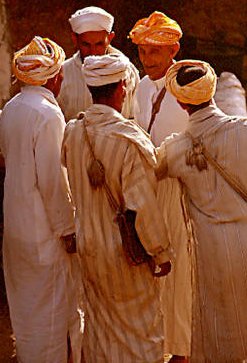
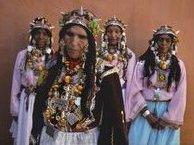 In modern texts like the Webster's New World Dictionary, the Moors are categorized as members of a Moslem people of mixed Arab and Berber descent. The term Berber is currently a general term that is now applied to these North Afrikan people who presently share common cultural ideas, customs and language. This separation of Black from the name Moor is a recent modification, since in the beginning they were all used synonymously.
In modern texts like the Webster's New World Dictionary, the Moors are categorized as members of a Moslem people of mixed Arab and Berber descent. The term Berber is currently a general term that is now applied to these North Afrikan people who presently share common cultural ideas, customs and language. This separation of Black from the name Moor is a recent modification, since in the beginning they were all used synonymously.
Evidently, the indigenous Berbers are now one of the most deliberately misrepresented people of North Afrika.
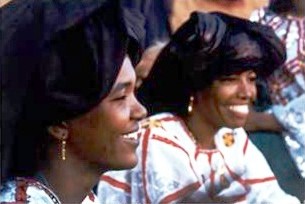
 These Black Berber women on the left are descendants of the ancient Berbers whom the early Greeks and Romans wrote and spoke about in glowing terms. On the right is a modern Berber family enjoying a traditional meal. However, these are not the types of images shown on television or displayed in the mainstream text books. Only the light skinned people, who are currently referred to as Berbers because of a common language and customs, tend to be in the spot light. In Ancient times, the Afrikans were called Ethiopians; in medieval times they were called Moors; in modern times they are called Negroes.
These Black Berber women on the left are descendants of the ancient Berbers whom the early Greeks and Romans wrote and spoke about in glowing terms. On the right is a modern Berber family enjoying a traditional meal. However, these are not the types of images shown on television or displayed in the mainstream text books. Only the light skinned people, who are currently referred to as Berbers because of a common language and customs, tend to be in the spot light. In Ancient times, the Afrikans were called Ethiopians; in medieval times they were called Moors; in modern times they are called Negroes.
THE MOORS RULED THROUGHOUT EUROPE
During the centuries that followed, these same Afrikan conquerors were responsible for civilizing backward Spain and Portugal. The court of the Moorish rulers at Cordoba became the centre of culture for the Arts, learning, and elegance. Commerce flourished; mathematics, science and medicine found their way through the cultural darkness of Spain. This same cultural civilization was brought into Portugal by the conquering Afrikan Moors, and contact established with the Far East brought Spain and Portugal a true renaissance when other parts of Europe were still going through a thousand years of darkness.
The domination and rule of the Moors also reached into parts of Italy. In 846 A.D., the city of Rome was held in a state of siege while in 878 they captured Sicily from the Normans. Twenty years later the Moors took control of Southern Italy after defeating Otto II of Germany.
According to the historical archives, the Moors also dominated the British Isles at one time in the past. David McRitchie, with undisputed academic authority, declared that the Moors dominated Scotland as late as the time of the Saxon Kings.
He wrote, "So late as the tenth century three of these provinces [of Scotland] were wholly Black and the supreme ruler of these came at a time the paramount king transmarine Scotland. We see one of the Black people - the Moors of the Romans - in the person of a King of Alban of the tenth century. History knows him as Kenneth, sometimes as Dubh the Niger. ... We know as a historic fact that a Niger Val Dubh has lived and reigned over certain Black divisions of our islands - and probably White divisions also - and that a race known as the Sons of the Blacks succeeded him in history."
[Figures 1-3] Black Moorish Royalty and Nobility throughout all Europe. [Figure 4] A Royal Bust of a Moorish Lord.
By 1507 there were numerous Moors at the Court of King James IV of Scotland.
An Afrikan king named Gormund ruled Ireland during the Anglo-Saxon period in England. Halfdan the Black was the first Afrikan king to unite Norway.
The original knights of England were Black including those of King Arthur's Round Table. Sir Morien was also known as Maurice the Moor or The Black Knight of King Arthur’s fame. Sir Pallamedes was described as all Black, indicating that his head, body and hands were all Black.
When the British Isles were invaded by the Vikings, some of these Norse raiders were Afrikans. A prominent Viking of the 11th century was Thorhall, a strong, giant Black man who was aboard the ship that carried the early Vikings to the shores of North America.
Another Viking more notable than Thorhall was Earl Thorfinn, "the most distinguished of all the earls in the Islands". Thorfinn who was described as one of the largest men in relation to his stature, ruled over nine earldoms in Scotland and Ireland, and died at the age of seventy-five.
[1] St. Maurice, a Black knight under Germany's imperial eagle. [2] A Black Knight: Saint. [3] A Black Knight and noble of the Holy Roman empire of Germany. Note the shield has a Moor head emblem. [4] Another Black Knight: Noble. Note the shield of the Holy Roman Empire and his medieval Armor. [5] A Knight of Templar of the Holy Roman Moorish Empire.
The Moors were a leading power in the 6th and 7th centuries, dominating the Mediterranean and North Atlantic, holding power over the coasts of Western Europe and the British Isles. They gave the culture of learning in the arts and sciences to the Europeans who would later falsely claim that they were the ones who “brought civilization to the world, Afrika in particular, and other Black people in the Diaspora,” whom they claimed were languishing in "darkness and nothing elevating ever came out of these backward enclaves.”
The truth is, the Afrikans who settled in the European countries for several centuries first gave the Iberian Peninsula and the rest of the countries in the Western world the civilization they had adopted, but this fact has remained concealed through racism, falsifications, untruths, myths and complete exclusions.
Through Afrika the new knowledge of China, India, and Arabia reached Europe, and Afrika supplied the men necessary to protect Moslem Spain from attacks, thus making it possible for the new learning to take root and develop.
During the Middle Ages, masqueraders used to blacken their faces "so they might better pass as Moors," and they would perform such dances as the Morris dance of England and the Moresca, dances obviously named after and derived from the Moors. Another of their contributions to dance was known as the "Flamenco Moro", a dance after which today's Flamenco was developed.
The Moors were so renowned in the arts that Henri Lohte, a Frenchman, once wrote in the 1600s, "I can tell here what the inhabitants of Venus are like; they resemble the Moors of Grenada; a small Black people, burned by the sun, full of wit, always in-love, writing verse, fond of music, arranging festivals, dances and tournaments every day".
Leo Afrikanus in 1600 also wrote: "For all the negroes of the Black Moors are descendants of Cush, the sons of Ham, who was the son of Noah. But whatever difference there is between the Negroes and the tawny Moors, it is a fact that they are all the same ancestry."
A book published in 1610 mentions that the Spaniards were described as “a white people ruled by a Black one. The long and lanky dark brown men called the Tuarek of the Sahel countries, or Tuwareg who can still be seen, veiled and armed with a sword and shield, striding through the desert with their camels, and are still involved in the desert commerce as they were once in charge of it in the Middle Ages.”
Tuareg People
Basil Davidson, one of the most noted historians declared that “there were no lands during the eighth century that was more admired by its neighbours, or more comfortable to live in than a rich Afrikan civilization that took shape in Spain.”
The Moorish culture was a combined one. The Moors satisfied themselves with the acquisition of knowledge from both the East and the West. By the 7th and 8th centuries the ancient civilizations of Egypt, Harrappa, Akkad and Cush had long since turned over their knowledge of philosophy and sciences to the Greeks, Hebrews, Chinese, Indians and Persians, so from the ancient cultures the Moors obtained their knowledge through these developing civilizations.
The Moors could have benefited in their search for knowledge from the world's greatest libraries in Alexandria, Egypt, but they were long since destroyed. The great library of Alexandria, which consisted of the storehouse of knowledge of the ancient world, was accidentally damaged by Julius Caesar and further ruined by Mark Antony, a Roman General, but in A.D. 389 it was deliberately destroyed by a Christian mob on orders from the Christian Emperor Theodosius.
For seven centuries the medical schools of Europe owed everything they knew to Moorish research. Diagnosis, autopsies and dissection of dead bodies were practiced in their schools of anatomy, where trained personnel carried out some of the most delicate surgical operations, thereby accumulating invaluable information in the study of the functions of the human body, and cures for its diseases.
There is a misconception that the white race was responsible for all the great civilizations of the past, but this is nothing more than a misinformed, colonial fantasy circulated by European-orientated racist historians. However, there are many who disagreed with this viewpoint.
Joseph McCabe in “The New Science And The Story Of Evolution”, pp. 292-98 wrote, "The superior germ-stuff of the great White race is completely discredited by the fact that our ancestors remained in the wings, pure barbarians, during the two thousand years when the dark men of the Mediterranean race were constructing civilizations, and that our white race, first in the Greeks and then in the Teutons, devastated civilization for centuries.”
"Until about 700 B.C., the philosophers of the world would have said that White men seemed incapable of civilization. ... None of our modern sophistry redeems the squalor of Europe from the fifth to the eleventh century. And it was again the dark-skinned men of the south who restored civilization. By the year 1,000, Europe was reduced to a condition which, if we were not Europeans, we should frankly call barbarism, yet at that time the Arabs had a splendid civilization in Spain, Sicily, Syria, Egypt, and Persia, and it linked on to those of India and China. We write manuals of the history of Europe or of the Middle Ages, and we confine ourselves to a small squalid area, (Russia and Prussia were not yet civilized and Spain was Moorish), and ignore the brilliant civilization that ran from Portugal to the China Sea.”
But while the Moors were re-civilizing Europe, noble empires in Ghana, Mali, and Songhai (Western Afrika) were thriving and trading with the Moors, showing that Afrika was definitely not some Dark Continent waiting for any European to come over and civilize it. In fact, Black Egyptians and Black Moors were credited as having civilized the European barbarians.
By the 11th century, however, the Moroccan Islamic rulers of Spain had become decadent, and in 1086 under the command of the Black-skinned Yusuf ibn Tashfin, the Almoravids, which was a dynasty of very Black Muslim sultans from Senegal in the heart of western Afrika, arrived, further consolidating the earlier incursions. Their rise to power began when a pilgrim named Yahya (the Muslim name for John the Baptist) returned home from Mecca and founded a new religious sect which quickly developed into a new military campaign that branched out from Senegal, conquering all of Northwest Afrika and Spain.
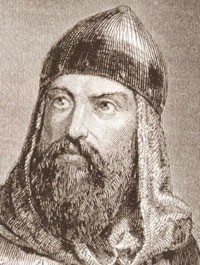 Yusuf ibn Tashfin, the greatest of the Almoravid leaders, defeated El Cid (right), one of Spain's most renowned and legendary folk heroes, and though Yusuf was almost 80 years old when he came to Spain, he was still quite energetic. Outnumbered by the Christians 3-to-1, his unconquerable spirit triumphed, and miraculously he destroyed King Alfonso of León and Castile at the Battle of Zalacca, where 70,000 Christian soldiers were on the run from Yusuf's army of 25,000 Muslims. One by one, Yusuf defeated the Christian generals inflicting humiliating defeats on the Christian armies, with El Cid being the last one to fall, and when he did, practically the entire Iberian Peninsula was under Yusuf's control. Yusuf became King of an Empire that encompassed a large section of Afrika and most of Spain. In 1090 Yusuf ibn Tashfin again invaded Spain, seizing all the Moorish territories of Spain except Zaragoza.
Yusuf ibn Tashfin, the greatest of the Almoravid leaders, defeated El Cid (right), one of Spain's most renowned and legendary folk heroes, and though Yusuf was almost 80 years old when he came to Spain, he was still quite energetic. Outnumbered by the Christians 3-to-1, his unconquerable spirit triumphed, and miraculously he destroyed King Alfonso of León and Castile at the Battle of Zalacca, where 70,000 Christian soldiers were on the run from Yusuf's army of 25,000 Muslims. One by one, Yusuf defeated the Christian generals inflicting humiliating defeats on the Christian armies, with El Cid being the last one to fall, and when he did, practically the entire Iberian Peninsula was under Yusuf's control. Yusuf became King of an Empire that encompassed a large section of Afrika and most of Spain. In 1090 Yusuf ibn Tashfin again invaded Spain, seizing all the Moorish territories of Spain except Zaragoza.
A Black Moorish female warrior named Nugaymath al-Tarqiyya was the leader of a contingent of 300 Black Moorish Amazon Queens with shaven heads leaving just a knot at the top, that were part of the Sunhadja confederation of Black Berbers who led the Almoravid siege of Valencia.
King Bucar had ordered this Black Moorish female warrior to position her company close to the town. Nugaymath al-Tarqiyya was such an accurate master archer with the Turkish bow, that she was named Nugaymath al-Tarqiyya by the Moors, which in Arabic means “star of the Tuareg archers”.
They were described as "negresses" and were members of the Almoravid Dynasties which occupied Spain in 1086 A.D. The Almoravids were a heavy Black population, originating in southern Morocco and Northern Senegal in western Afrika.
Later, Yakub ibn Yusuf (1149-1199 A.D.), also known as Al-Mansur which means “The invincible,” since it is said that he never lost a battle, was considered by Muslims to be the greatest of all the medieval Kings of Spain. By conquering Spain and Portugal on two separate occasions Yakub al-Mansur was hailed as the most powerful ruler in the world, with his immense Empire stretching to the border of Egypt. This Afrikan ruled Spain during its most glorious period.
Al-Mansur, known to his subjects, as The Black Sultan, came to power in Afrika during the period when the Christian re-conquest of Spain had again obtained tremendous momentum after the Almoravids, like the Umayyads before them, had become corrupt. As a result, Al-Mansur conquered and expanded the empire that was first established by the great Almoravid leader, Yusuf ibn Tashfin.
But as in the past, internal strife amongst the various Muslim sects played right into the hands of the Christian forces who took full advantage, and believing that their day had finally come, assembled an army of 300,000 men at Alarcos, intending to put an end to Moorish rule in Spain once and for all. Al-Mansur sent envoys throughout his vast North Afrikan domains calling for all able-bodied men to come to the rescue of Islam. They responded well, and at Alarcos, Al-Mansur dealt the Christian forces another crushing defeat, the spoils of which were beyond calculation, before going on to re-capture all the principle strongholds of Christian Spain.
THE MOORS AND THE DARK AGES
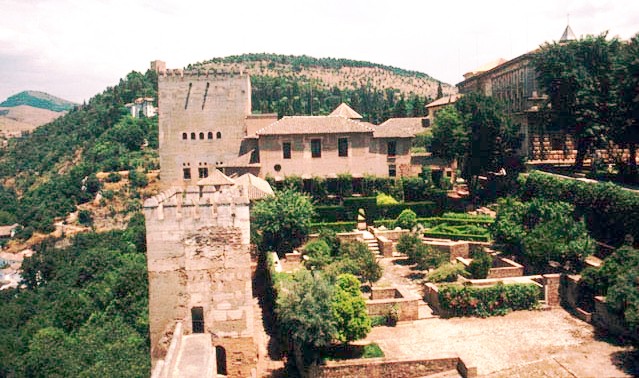 Al-Mansur was a military genius, a lover of justice, and also a supporter of the arts and literature, so when he came to power his first order of business was to distribute vast quantities of food to the poor, to free all who were unjustly imprisoned, and to reform the laws to prevent others from being unjustly incarcerated.
Al-Mansur was a military genius, a lover of justice, and also a supporter of the arts and literature, so when he came to power his first order of business was to distribute vast quantities of food to the poor, to free all who were unjustly imprisoned, and to reform the laws to prevent others from being unjustly incarcerated.
He rebuilt the cities and erected mosques, schools, hospitals, and aqueducts. Moorish success in hydraulic engineering was exceptional as noted by the construction of an aqueduct that carried water from the mountains into the city using a piping system. Some of Spain's greatest Moorish architectural works including the Alhambra were started during Al-Mansur’s time in power.
When history is taught to white people, the period called the "Middle Ages" is generally referred to as the "Dark Ages," and is portrayed in white history books as the period during which civilization in general laid idle. This was certainly true for the whites, but not for the Blacks . In fact, a painful piece of evidence that whites still cannot face up to is the reality that during the "Middle Ages," the great empires of the world were Black empires, and the educational and cultural centres of the world were predominately Afrikan. Moreover, during that period, the lawless barbarians were the white people.
During the "Dark Ages" in Christian Europe, the Moors had built more than 300 public baths throughout its 21 suburbs, and introduced Spain to underwear and bathing with soap at a time when taking a bath was thought to be a diabolical practice to be shunned by all good Christians, while cleanliness was regarded as a sin. Human waste was simply thrown into the streets because there were no bathrooms available.
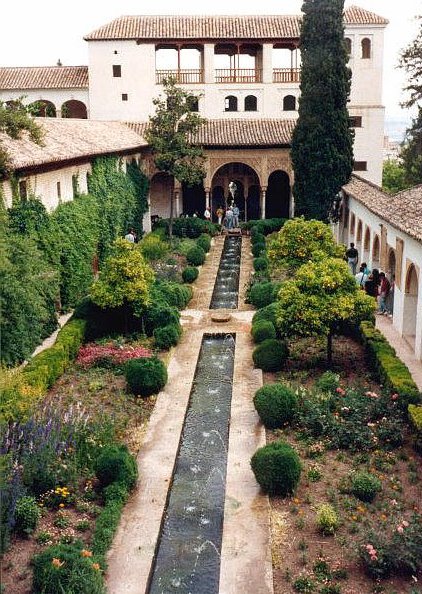 In addition to 700 mosques, the Moors also constructed magnificent cities in Spain, but the incredible city of Cordova was the most majestic of the tenth century, with half a million inhabitants dwelling in over 113,000 homes. There were also well-paved roads with elevated sidewalks for pedestrians.
In addition to 700 mosques, the Moors also constructed magnificent cities in Spain, but the incredible city of Cordova was the most majestic of the tenth century, with half a million inhabitants dwelling in over 113,000 homes. There were also well-paved roads with elevated sidewalks for pedestrians.
The houses, which were adorned with gardens, artificial fountains and orchards, contained marble balconies for summer and hot-air ducts under the mosaic floors for the winter season. At night it was possible to travel for 10 miles by the light emanating from the lamps along a continuous block of buildings. All this was taking place several hundred years before there were any paved roads in Paris, or a single street lamp in London, where even the streets were still covered in mud and lacked lighting. "London was still a tiny mud-hut village, if truth be told" - (Digest, 1973, p. 622).
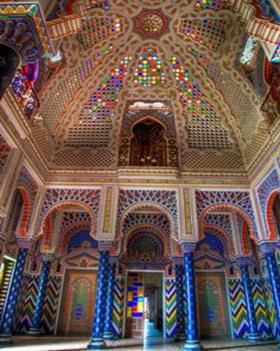
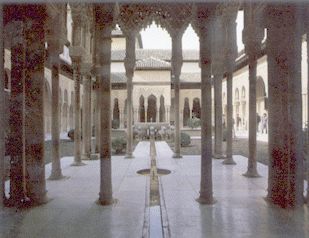 Throughout that period, Moorish monarchs were living in splendid palaces of highly polished marble and elaborately carved walls with beautiful mosaic floors, while European Kings (England, France, and Germany) were living in big, cold, damp barns of unfinished stone which lacked windows and chimneys, with just a hole in the roof to extract the smoke.
Throughout that period, Moorish monarchs were living in splendid palaces of highly polished marble and elaborately carved walls with beautiful mosaic floors, while European Kings (England, France, and Germany) were living in big, cold, damp barns of unfinished stone which lacked windows and chimneys, with just a hole in the roof to extract the smoke.
Also at a time when Christian Europe had a mere two universities of any merit, the Moors had constructed more than 17 great universities, 800 public schools, numerous colleges and bookstores. Not even public libraries were in existence in Christian Europe during the 10th and 11th centuries, but Moorish Spain had more than 70, of which the one in Cordoba had a collection of 600,000 books. Students from France and England travelled there to sit at the feet of Muslim intellectuals to study philosophy, science and medicine .
Females were encouraged to dedicate themselves to intense study since mother Afrika was a matriarchal society, making Spain in that era, the only region where female doctors, lawyers, and scientists were accepted.
The Moors had an insatiable desire for knowledge and searched monasteries for rare books, translating everything they could find into Arabic. They collected and translated ancient Egyptian and scientific texts which provided the gateway for the European to access higher learning at the end of Roman domination. In Moorish Spain, free education was available to the poor and most humble, while in Christian Europe where superstition, barbarism and filth ran high, 99% of the populace was illiterate, including the kings who could neither read nor write.
The entrance of the Moors was therefore responsible for the European rediscovery of art, music, science, mathematics, geography, geometry, political and physical Sciences, philosophy, personal hygiene, medicine, military training and manoeuvres.
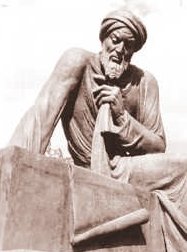 The Ethiopians and Black Egyptians brought Mathematics and Trigonometry, while the Afrikan Moors developed Algebra and expanded Trigonometry into a science.
The Ethiopians and Black Egyptians brought Mathematics and Trigonometry, while the Afrikan Moors developed Algebra and expanded Trigonometry into a science.
Even the word Algebra was derived from the title of the first textbook produced on the subject written around 820 A.D., entitled Hisab Al-Jabr wa'l Muqabala by the "Father of Algebra," Black author Muhammad Bin Musa Al-Khowarizmi, from whose name the word algorithm was derived.
This textbook alluded to the systematic method developed in the Islamic Empire for solving linear and quadratic equations.
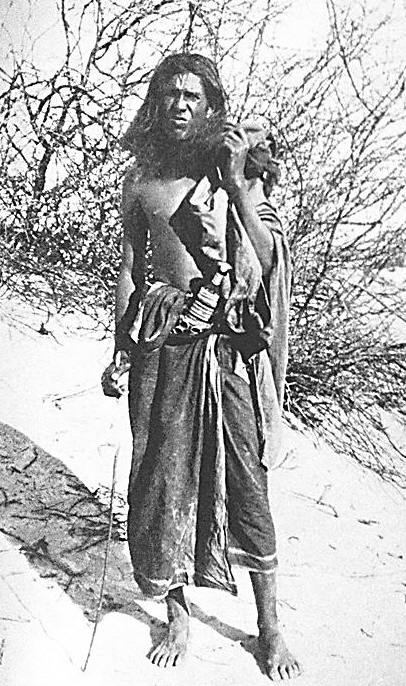
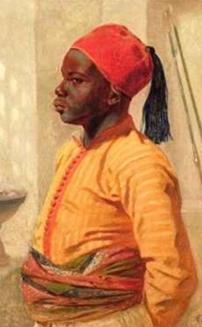 The Arabic numbers used today, including the zero and the decimal point, came from the ancient Arab people (left-right) who originally were Afrikans. The useless Roman numerals were replaced by Arabic figures since, according to Dr. Ivan Van Sertima, "you can't do higher mathematics with Roman numerals."
The Arabic numbers used today, including the zero and the decimal point, came from the ancient Arab people (left-right) who originally were Afrikans. The useless Roman numerals were replaced by Arabic figures since, according to Dr. Ivan Van Sertima, "you can't do higher mathematics with Roman numerals."
The words Chemistry and Alchemy came from the word Kam or Khem which means Black, a term the ancient Egyptians used to describe the colour of their skin. The alphabet used by Western civilization traces its roots to the Black Phoenicians who copied these principles from the Afrikans of the Nile Valley.
The incorrectly credited Pythagoras and Euclid actually got their knowledge from the Sacred Mystery Schools of Black Egypt, the world's first universities known to man, which had other branches in many locations throughout the world including China.
Moorish school teachers, (unlike their European counterparts who believed that the earth was flat), were aware that the earth was round and taught geography from a globe. They introduced the compass to Europe and produced accurate maps which showed all land and sea routes located precisely in relation to latitude and longitude. Being such experts at shipbuilding, they were able to utilize their geographical expertise to engage in commercial activities with distant lands like India and China. It should not be a surprise therefore that Christopher Columbus’ chief navigator on the flagship Santa Maria was a Moor born in Moguer, Spain named Pietro Olonzo Nino known as “El Negro”, who is said to have argued with Columbus about who really discovered the Americas.
Clearly the ingredients of the European Renaissance were introduced and implemented by the Moors in Europe, which had taken the general population out of the "Dark Ages" and paved the way for the Renaissance period. These sources of European culture can easily be traced to the Moors, whose civilization was not only artistic, scientific and commercial, but also extremely tolerant of all other races and cultures. The Jews of medieval Spain, for the most part, coexisted very well with the Muslims, and for them, the sojourn in that nation is remembered as being the second most glorious period in their history, exceeded only by the glory of the reigns of King David and King Solomon in ancient Israel. Therefore, the mis-education that has been promoted for centuries suggesting that the modern Greeks, Leonardo da Vinci, and other Europeans were responsible for the European Renaissance is nothing but another big white lie.
During the Golden Age of Islam, the Moorish Empire was the most advanced State in the world. It is a historically undisputed fact that medieval Spain was the cultural, educational, and scientific centre of Europe and was considered as the greatest nation in Europe during the "Dark Ages", a status which it has never regained, since it was the light of knowledge which illuminated the Moorish lands of Spain and Sicily that was instrumental in dispelling the gloom of ignorance that encircled mediaeval Europe.
 In addition to the Moors' advances in science and scholarship, they also enjoyed other activities such as horseback riding, marksmanship, polo, backgammon, and chess, the favourite Moorish pastime, because they enjoyed the challenge of warfare strategy and tactics.
In addition to the Moors' advances in science and scholarship, they also enjoyed other activities such as horseback riding, marksmanship, polo, backgammon, and chess, the favourite Moorish pastime, because they enjoyed the challenge of warfare strategy and tactics.
In this picture (1283 A.D.), Black Moorish noblemen are playing chess while being waited on by white and Black servants.
Hannibal, (247-183 B.C.), the great Moor of Carthage's military ingenuity, certainly indicated that he also must have participated in some aspect of war simulation.
The world famous shrine in Portugal (Fatima) where Catholic pilgrims from all over the world go in search of miracle cures for their afflictions, owes its origin to the Moors. There is an account where a Portuguese nobleman was so saddened by the death of his wife, a young Moorish beauty whom he had married after her conversion to Christianity, that he gave up his title and fortune to enter a monastery. His wife was buried on a high plateau called Sierra de Aire, from which the name Fatima was derived.
THE MOORS AND THE ROMAN ARMY
During the 4th century A.D., the Roman army extensively recruited Moors because of their exceptional skills in combat. In fact, according to the “Epitome de Caesaribus” (390s A.D.), one such Moorish general named Aemilianus (207-253 AD) was so skilled in battle that he was made an emperor.
Moors were recruited into the Roman military service and stationed in Britain, France, Switzerland, Austria, Hungary, Poland and Romania, with many becoming high ranking officers. For example, Lusius Quietus, a Moor, was considered the most competent soldier in the Roman army and considered one of Rome's greatest generals, who was chosen by the Roman Emperor Trajan as his successor.
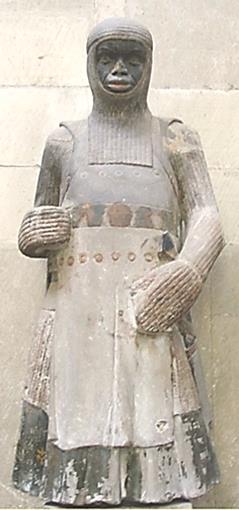 Saint Maurice (also Moritz, Morris, or Mauritius) was an Egyptian born in A.D. 250 in Thebes, an ancient city in Upper Egypt K.MT (Afrika), who later became the leader of the Roman Theban Military Army during the 3rd century. The name Maurice stems from the word Moor or Mauritania.
Saint Maurice (also Moritz, Morris, or Mauritius) was an Egyptian born in A.D. 250 in Thebes, an ancient city in Upper Egypt K.MT (Afrika), who later became the leader of the Roman Theban Military Army during the 3rd century. The name Maurice stems from the word Moor or Mauritania.
Saint Maurice, "a Knight of the Holy Lance and the greatest patron saint of the Roman Catholic Church in medieval Europe, the eastern orthodox churches, including the Coptic and oriental beliefs, practices and institution of the Orthodox Church", was worshipped as early as 460 A.D., and is said to have gained sainthood after refusing to allow his legion to massacre a Christian uprising.
A church was also built in Germany to honour him where the cathedral of Magdeburg - which contains this statue - is located. He was also the saint of the oldest churches in New Orleans, USA, including the St. Bernard Parish.
St. Maurice the Israelite Moor has numerous structures, artwork, and even a castle dedicated to him, along with almost 300 major images that were catalogued. Coins and Coats of Arms for many districts and cities in Germany were also made in his honour.
Saint Maurice is still worshipped as a saint in places like Poland, Spain, France, Romania, Switzerland, Austria, Greece, Italy, Czechoslovakia, Hungary, Britain, Germany and the former Yugoslavian States where his iconography decorates churches and shrines.
By the way, Saint Augustine was also a dark-skinned Berber.
Fado singers, who abound in all corners and bistros of Alfama, also owe much to the influence of the Moorish musicians. Even the fishing boats called the Rabelos on the beaches of Cascais show definite Afrikan traces, and are reminiscent of the transport boats of Lagos in Nigeria.
The Moors ruled and occupied Lisbon and the rest of the country well into the 12th century, but were later defeated and driven out by the forces of King Alfonso Henriques, with the support of English and Flemish crusaders. That battle took place at the Castelo de Sao Jorge or the Castle of St. George which still stands today overlooking the city of Lashbuna or Lisbon, as called by the Moors.
THE DECLINE OF THE MOORISH EMPIRE
By the 13th century, Moorish power in Spain began to decline, splitting up into factions, and waging war among themselves because of religious and political differences. By that time the European Christians had already absorbed the sciences and culture of the Moors which had allowed them to put an end to the horror of the Dark Ages, and to form a united front to drive the Moors out of Europe.
Dr. Edwards Scobie, Professor Emeritus at New York City University and leading expert and authority on the presence of Afrikans in early Western Europe, wrote: "How were the Moors recompensed for their phenomenal contribution in civilizing Spain, Portugal and other areas of Europe steeped in barbarism and darkness?”
During the Middle Ages, the white Christians of Spain deeply desired to expel the Blackamoors from their country, but it was not until 1492 when Isabella and Ferdinand finally defeated the last Moorish King in Granada, that their dreams were finally realized. This was the same year that Christopher Columbus was commissioned by Queen Isabella to explore the "New World".
Catholic rulers began clearing the Iberian Peninsula of the Islamic Moorish population around 1490 A.D., and by 1492 Spain's Ferdinand V and Isabella I had seized control of that region after waging a long war on Granada. By this time the Moors had lost all of Spain except the Kingdom of Granada.
King Boabdil, the Moorish ruler was driven out of Spain by the resurgent Christian forces of Ferdinand and Isabella in 1492. By royal decree in 1496, Portugal's King Manuel had also expelled the Moors, which resulted in many relocating to other parts of Europe where they became high ranking nobility, because their knowledge and skills were still highly valued.
In 1499 Cardinal Francisco Jimenez Cisneros launched a large-scale Inquisition which included mass conversions to Christianity, persecutions, burning of books, and the closing mosques and synagogues. By 1502, Ferdinand and Isabella were finally successful in driving out the Moors.
In 1609, King Phillip III of Spain signed an order at the height of the Spanish inquisition that basically led to the ethnic cleansing of Muslims from the European countries.
The Moors had introduced the first shooting mechanisms or rifles known as fire sticks, thus revolutionizing European military science, but this backfired and led to their downfall when their enemies used the gunpowder technology to force them out of Spain and drive them back to West Afrika. By 1610, through expulsion and migration, about a million Moors had returned to North and West Afrika. Many of them would later be captured and sold into slavery throughout America and the Caribbean islands. Many of these slaves were multilingual and well-educated cultured scholars who came on the ships of Christopher Columbus.
The Moors had contributed greatly to Western civilization, so with the decline and fall of the Moorish Empire and their expulsion from Spain came a severe set-back for Europe and modern civilization, a fact that is less known even to the educated classes of the Western World.
Stanley Lane-Poole, in 1886, wrote, "The history of Spain offers us a melancholy contrast. Twelve hundred years ago, Tarik the Moor added the land of the Visigoths to the long catalogue of kingdoms subdued by the Moslems. For nearly eight centuries, under her Mohammedan rulers, Spain set to all Europe a shining example of a civilized and enlightened state. Her fertile provinces, rendered doubly prolific by the industry and engineering skill of her conquerors, bore fruit an hundred-fold. Students flocked from France and Germany and England to drink from the fountain of learning which flowed only in the cities of the Moors."
"Whatsoever makes a kingdom great and prosperous, whatsoever tends to refinement and civilization, was found in Moslem Spain."
"The fall of the Moors in 1492 gave way to the crusade of Ferdinand and Isabella, and with Granada fell all of Spain's greatness. For a brief while, indeed, the reflection of the Moorish splendour cast a borrowed light on the history of the land which it had once warmed with its sunny radiance. The Great Epoch of Isabella, Charles V, and Philip II, of Columbus, Cortes, and Pizarro, shed a last halo about the dying moments of a mighty state. Then followed the abomination of desolation, the rule of the Inquisition, and the blackness of darkness in which Spain has long plunged ever since. In the land where science was once supreme, the Spanish doctors became noted for nothing but their ignorance and incapacity, and the discoveries of Newton and Harvey were condemned as pernicious to the faith."
"Where once seventy public libraries had fed the minds of scholars, and half a million books had been gathered at Cordova for the benefit of the world, such indifference to learning afterwards prevailed, that the new capital, Madrid, possessed no public library in the eighteenth century, and even the manuscripts of the Escurial were denied in our own days to the first scholarly historian of the Moors, though himself a Spaniard. The sixteen thousand looms of Seville soon dwindled to a fifth of their ancient number; the arts and industries of Toledo and Almeria faded into insignificance; the very baths-public buildings of equal ornament and use-were destroyed because cleanliness savored too strongly of rank infidelity."
"The land, deprived of the skillful irrigation of the Moors, grew impoverished and neglected; the richest and most fertile valleys languished and were deserted; most of the populous cities which had filled every district of Andalusia fell into ruinous decay; and beggars, friars and bandits took the place of scholars, merchants and knights. So low fell Spain when she had driven away the Moors. Such is the melancholy contrast offered by her history."
"For centuries Spain had been the centre of civilization, the seat of arts and sciences, of learning, and every form of refined enlightenment. No other country in Europe had so far approached the cultivated dominion of the Moors. .... The Moors were banished and for a while Christian Spain shone, like the moon, with a borrowed light; then came the eclipse, and in that darkness Spain has grovelled ever since."
"The misguided Spaniards knew not what they were doing. They did not understand that they had killed their golden goose."
The 19th century scholar Stanley Lane Poole paints a picture of European savagery of the lowest form in their genocide of the Moors. 50,000 of them were brutally murdered on the famous day of all Saints in 1570, when the honour of the apostles and the martyrs of Christendom were celebrated by the complete martyrdom of these Moors. No less than three million Moors were banished by the 1st decade of the 17th century. To use the words of the Franciscan priest Bartholomew Las Cascas, during the Columbian era when these dastardly deeds were being perpetrated on the Moors, "Moloch must have been in the skies."
The day the last Moors were expelled from Spain was counted as a great day in Spanish history, since Spain, largely because of the strength of its navy, had achieved the status of a world power, but in less than a century, the Spanish Armada was defeated by England, and the nation went into a great decline ever since.
The European Christians were finally able to conquer Muslim territories, and soon afterwards the great debt Western civilization owed to the Moors was quickly forgotten. By the 18th century, European Christians saw themselves as the predestined rulers of the world with a divine mission to civilize the heathen. Western historians have conveniently ignored the immense contributions of the brilliant and energetic Moorish civilization that delivered Europe from mediaeval barbarism. This can only be interpreted as a form of European arrogance and disrespect towards Blacks. It is evident however, that the contributions of the Black Moors to European civilization are immeasurable, even though there is absolutely no credit given to them.
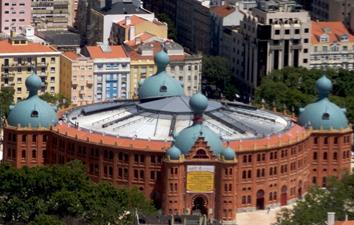
 However, the defeat of the Moors did not put an end to their influence in Europe, as their Afrikan presence can still be seen everywhere in Portugal and Spain through the architecture of the many buildings that still retain their Moorish designs. These can be seen in places like the Praca De Touros - the Bull Ring in Lisbon and Alfama, which is the oldest quarter in Lisbon with its 15th century houses and narrow-winding streets, dating back to the time when it was the last settlement of the Moors.
However, the defeat of the Moors did not put an end to their influence in Europe, as their Afrikan presence can still be seen everywhere in Portugal and Spain through the architecture of the many buildings that still retain their Moorish designs. These can be seen in places like the Praca De Touros - the Bull Ring in Lisbon and Alfama, which is the oldest quarter in Lisbon with its 15th century houses and narrow-winding streets, dating back to the time when it was the last settlement of the Moors.

© John Moore - Barbados, W.I. (2000 updated October 2018) ©. All rights reserved.